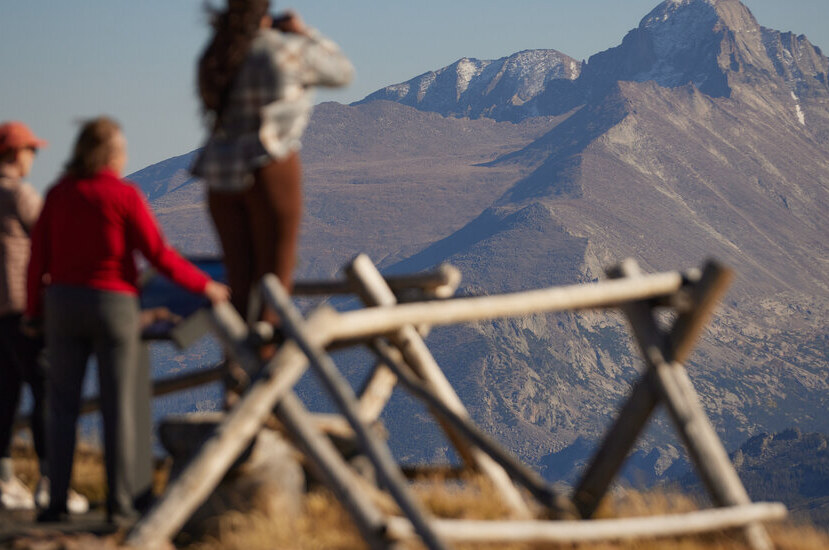It’s wedding season at Acadia National Park in Maine, and Tabitha Brown can barely keep up with the demand for her “luxury picnics” — champagne and charcuterie served seaside.
The fall rush around Acadia helps workers survive winter’s lean months. But that’s all at risk if a government shutdown forces America’s national parks and monuments to lock their gates, scuttling millions of vacations and school trips, and costing tourist towns from the Everglades to Yellowstone to Death Valley an estimated $70 million a day.
“I don’t know what anybody would do,” said Ms. Brown, who holds 90 percent of her picnics inside Acadia. “If the park shuts down, nobody wants to come. It would be tragic.”
It would also be the fourth time in a decade. Business owners and workers say that recurrent shutdowns have become a new kind of disaster alongside the floods, wildfires and hurricanes that come with living at the doorstep of a natural wonder.
“I’m getting to the point where it’s just part of the business,” said Nicole Schultz, who runs Green Jeep Tours in Estes Park, Colo., and is scrambling to plan alternative routes in case Rocky Mountain National Park closes down next week. “That doesn’t mean I like it. You just have to accept this.”
The Department of the Interior, which oversees national parks and monuments, has not said when or how it might close its more than 400 national parks sites and furlough its 20,000 workers.
The lack of information has frustrated some business owners and workers as the government’s funding deadline of Sept. 30 ticks closer. Parks that were shuttered under President Barack Obama during a 2013 shutdown were largely left open but unstaffed by President Donald J. Trump during a shutdown five years later.
Now, businesses and mayors say they have little idea what to expect.
“We don’t know what’s happening,” said Charles Wright, who runs boat tours into Everglades National Park in Florida. He said he could lose $5,000 a day if tourists from Europe, Canada and the Northeast see the park is closed, start canceling their reservations and head to Disney World instead.
The Big Cypress National Preserve, where he runs kayaking tours, is also likely to close, he said, adding that he is strapped to find alternatives for his customers.
“They get to go bowling instead,” he said.
The governors of Arizona and Utah said they would use state money to staff and run the parks if the federal government could not, following a playbook that they and several other states used during prior shutdowns.
Gov. Katie Hobbs of Arizona said the state would spend state lottery funds to keep the Grand Canyon open. And in Utah’s bustling red-rock deserts, state officials said they wanted to ensure that tourists kept visiting and spending around Arches, Capitol Reef, Zion, Bryce Canyon and other national sites.
The price tag will depend on how long the shutdown drags on, and which parks states want to keep open. During the 2013 shutdown, Arches was a relative bargain, costing Utah $7,662 a day to operate, according to Jonathan B. Jarvis, a former National Park Service director under Mr. Obama. Running Grand Canyon cost Arizona $93,000 a day. The park generated $710 million in tourist spending last year.
The Interior Department, which experts say would have to approve those arrangements, said it had no comment.
The national parks, which drew 312 million visitors last year, are often the most emotionally charged symbols of Washington’s malfunction during shutdowns.
The Obama administration closed the parks entirely during a 16-day shutdown in 2013, gating off the National Mall and closing the Statue of Liberty. Local economies lost $500 million in tourism spending, and protesters in Utah who were upset at being kept off public lands jumped the gates and tried to occupy the parks.
Republican politicians accused the administration of using the closures to amplify the pain of the shutdown.
Mr. Trump kept the parks open but unstaffed during a longer shutdown that began in December 2018, causing what environmental groups described as widespread damage. When rangers went back to work, they said they found graffiti, human waste outside locked bathrooms and tire tracks in fragile desert soil. There were toppled Joshua trees in the Mojave Desert and dead endangered birds on park roads, former parks officials said.
“It was a disaster,” Sally Jewell, who served as Interior secretary in the Obama administration, said in an interview.
Senator John Barrasso, a Republican whose home state of Wyoming includes Yellowstone and Grand Teton, last week urged the Interior Department to keep the parks open using money from fees. But former Interior Department officials and conservation groups said they expected the Biden administration to close most of them.
“You can’t have them open without protection,” Ms. Jewell said. “They’re our nation’s cultural and historical natural treasures.”
But closing is more complicated than just telling campers to pack up. Can commercial fishermen or tribal members with treaty rights keep fishing? Can people visit relatives buried in the cemeteries inside Great Smoky Mountains National Park? Should people really be banned from walking down the National Mall?
Towns at the edge of national parks are urging tourists to keep their travel plans. Even if Rocky Mountain National Park closes down, it is still Elk Fest in Estes Park, Colo., and the town is packed with herds of majestic ungulates bugling for a mate. A mother and her calf slowed traffic the other day, and bull elk are splashing around the town lake.
“There’s plenty to see,” Mayor Wendy Koenig said. “We’ve got beautiful leaves. There’s a lot of other things besides the park.”
Ms. Koenig said the town’s hotels, restaurants and shops were busy, reflecting a pandemic-era surge in tourism that has left many in national-park towns complaining about traffic, congestion and garbage. She was optimistic that Estes Park’s businesses would survive a shutdown.
Tourism workers like Nicholas Jennings, 42, are more on edge. Mr. Jennings takes tourists on Jeep tours of Rocky Mountain National Park on a vertiginous loop that overlooks the Continental Divide.
He gets paid by the tour, and said he did not know how he would make his monthly $1,200 rent if the park closed. Grocery prices at the main supermarket in town have soared in the past two years, and takeout costs at least $20.
“I don’t know how I’m going to live,” he said.
In Gatlinburg, Tenn., Erik and Vesna Plakanis have been “obsessively” watching the news and having emergency staff meetings to discuss how their tour guiding outfit can survive if they cannot lead backpacking trips into Great Smoky Mountains National Park.
The summer’s extreme heat and humidity seemed to keep many tourists away, but October was shaping up to be a record-breaking month. Their tour company, A Walk in the Woods, had been forced to lay off employees during the pandemic, and they had hoped that a killer October would sustain their business and their 30 employees through the winter.
“We’re a seasonal business,” Ms. Plakanis said. “It’ll completely wreck us.”
The Plakanises said they blamed hard-right Republicans in the House of Representatives for bringing the country to the precipice of a shutdown that would hurt their business and their neighbors. Federal workers have received back pay after previous shutdowns have ended, but the Plakanises said nobody would extend the same help to them and their employees.
“They’re taking money out of people’s pockets,” Ms. Plakanis said. “You cannot get a season back. Once the season ends, that’s it.”






Leave a comment